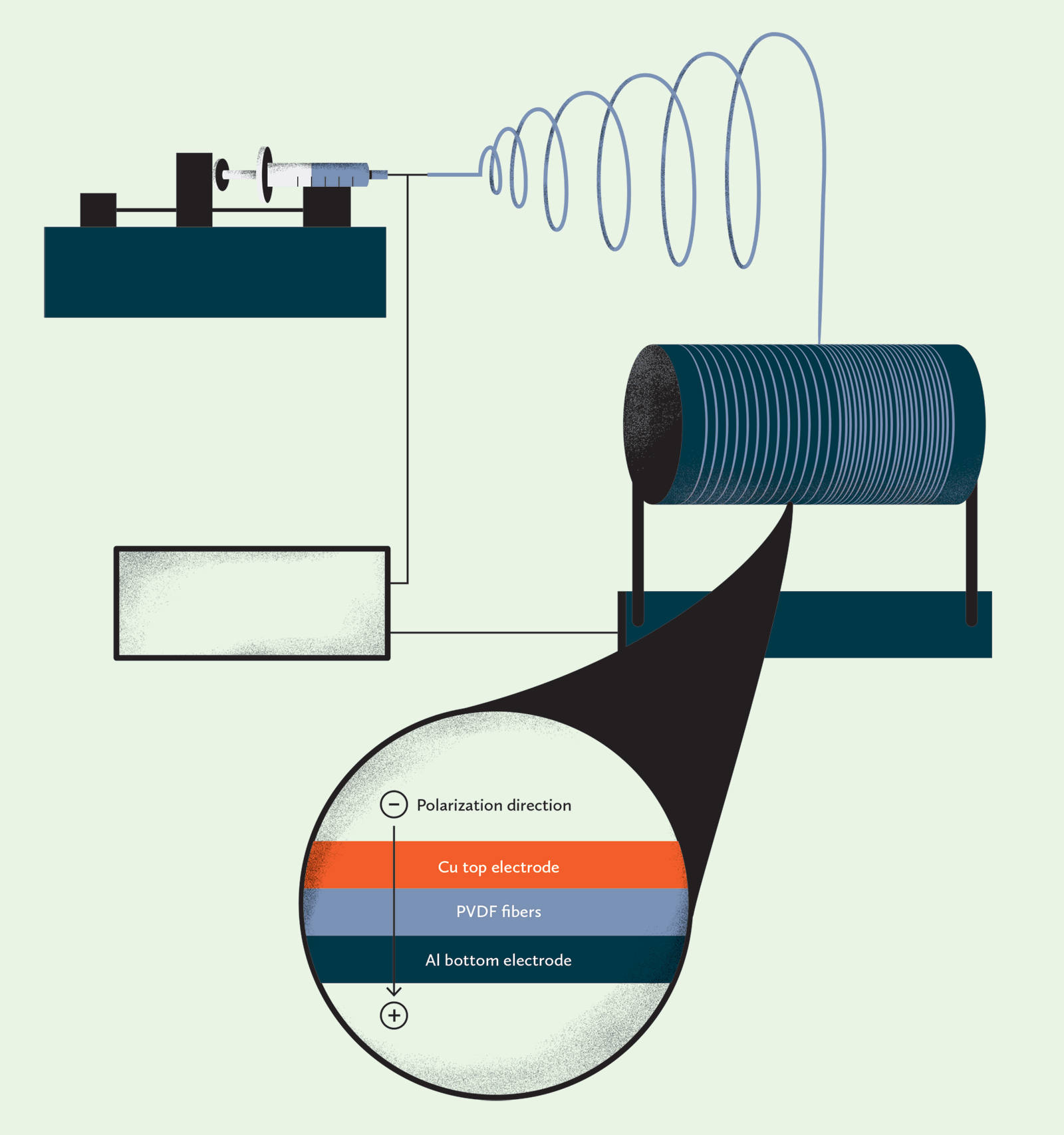Recall how your hair would cling to a plastic comb or the feeling of being zapped by the handrails of an escalator. Static electricity may be annoying, but it could play a role in powering emerging applications such as wearable devices. These devices demand materials that are both flexible and able to convert physical movement into electrical energy.
While piezoelectricity results in the electricity that stems from mechanical pressure, triboelectricity comes from materials shifting against each other, such as when you pull a plastic comb away from your hair.
Obtaining both piezoelectric and triboelectric effects, and getting them to work constructively in a flexible material, is a challenge that researchers from A*STAR’s Institute of Materials Research and Engineering (IMRE) and the National University of Singapore are trying to solve. Their solution is a flexible film from electrospun-aligned polyvinylidene fluoride (PVDF) fibers that can produce a giant electric output in response to mechanical vibration.
On its own, PVDF is the most commonly used piezoelectric polymer. To further increase its flexibility and electromechanical coupling performance, a team led by Kui Yao, a Principal Scientist at IMRE and the corresponding author on the study, conducted electrospinning under high voltage to shape the PVDF material into flexible fibers and induce the fibers to align in a desired orientation.

PVDF fibers are electrospun onto a layer of aluminum and then coated with copper, which acts as the top electrode. The result is a flexible device that uses both piezoelectricity and triboelectricity to generate electricity.
“Electrospinning enabled us to tune the fibers’ electron affinity with different polarization terminals,” Yao explained. “This results in strong and constructive piezoelectric and triboelectric responses within a single PVDF composition.”
To confirm their findings, the team tested the fiber film’s electromechanical conversions under different frequencies and input levels. In their experiments, they were able to obtain maximum effective piezoelectric strain and voltage coefficients of up to -1065 pm V-1 and -9178 V mm N-1, respectively. They then proposed a theoretical model to explain their experimental observations.
“Our theoretical analyses and experimental results showed the potential of the electrospun-aligned polar PVDF fiber material for mechanical energy harvesting,” said Yao.
Yao foresees that these fiber materials could someday provide electrical power in wearable devices by converting natural body movement into electrical energy.
The A*STAR-affiliated researchers contributing to this research are from the Institute of Materials Research and Engineering (IMRE).





